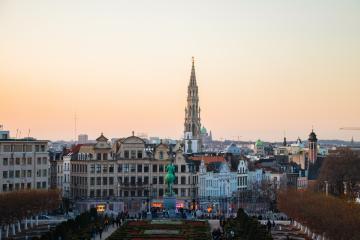About Belgium
Some “easy” politics
Belgium is a federal state, consisting of three communities: the Flemish Community, the French Community and the German-speaking Community; and three regions: the Flemish Region, the Walloon Region and the Brussels-Capital Region. There is no hierarchy between the federal level, the communities and the regions.
This division into three communities and three regions is a unique feature of Belgian federalism. Both types of entities have their exclusive responsibilities. Youth policy, for example, is a responsibility of the communities. The territories of the communities and regions overlap geographically because they correspond to different combinations of Belgium’s four linguistic areas (the Dutch language area, the French language area, the German language area and the French-Dutch bilingual area).

In a nutshell
- Area: 30,688 km²
- Official languages: Dutch, French and German
- Population: 11.7 million (1 January 2023)
- Head of state: King Philippe of Belgium
- Federal capital: Brussels
- Prime minister of the federal government: Alexander De Croo
Ministers for Youth
Each community has a minister responsible for youth, a parliamentary commission and several administrative departments with “youth” in their title and a large number of specific youth-related budget items. Since every community has its own minister for youth, this means Belgium has three altogether.
Youth councils
Belgium's youth councils are important instruments for young people's participation. They advise governments and parliaments on all areas related to children, young people and their organisations. They ensure that the voice of children, young people, youth organisations and youth advisory bodies (youth councils and pupil councils) is heard by policymakers.
There is a national youth council for each official language – the Flemish Youth Council, the French Youth Council and the German-speaking Youth Council – so that young Belgians can use their languages to take part.





